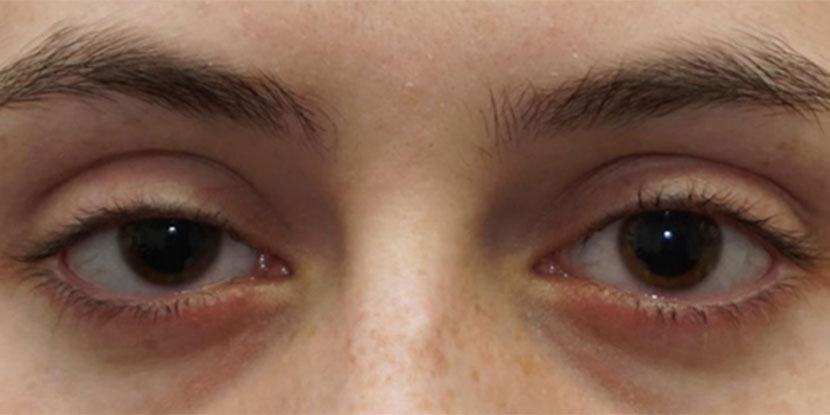Droopy eyelids may be present at birth, which is called congenital. Alternatively, it can develop throughout life, but not necessarily in old age. Let’s look at the causes and countermeasures for this phenomenon.
Aging is not the first cause of droopy eyelids; the most common cause is improper development of the eyelid-raising muscles. If the problem is already present at birth, it is best to intervene immediately to avoid further discomfort
Symptoms of Droopy Eyelids
Ptosis is the technical term for drooping eyelids, but what symptoms make you feel something is wrong? The most obvious is that one or both eyelids droop.
Other symptoms include:
- Difficulty closing or opening the eyes
- Moderate sagging of the skin above and below the eyelids
- Fatigue and pain around the eyes (especially during the day).
- Changes in facial appearance
The appearance of a droopy eyelid may be stable for an extended period, or it may progress gradually or intermittently over years. Ptosis may also be almost invisible or completely cover the pupil or iris.
In severe cases of ptosis, mainly if it develops on both eyelids, vision may be completely obstructed. In other situations, however, there may be only a hint, and it may not be immediately identifiable.
Ptosis: Causes
Ptosis is usually caused by a weakening of the eyelid muscles due to aging. In adults, the most common cause of ptosis is stretching of the levator muscle due to injury or as a side effect of certain eye surgeries.
Other causes of ptosis include:
- Injury
- Ocular tumors
- Nerve damage
- Diabetes mellitus
- opioid use
- drug abuse
Physician Diagnosis
Only a physician can diagnose a droopy eyelid, and the physician thoroughly examines both eyelids, observing the entire orbit.
Before evaluating the problem, the following precise measurements are taken:
- Eyelid cleft: the distance between the upper and lower eyelids vertically aligned with the center of the pupil.
- Marginal reflex distance: the distance from the center of the pupillary reflex to the edge of the upper and lower eyelids.
- Function of the Eyelid Muscles
- Distance of the skin folds from the edge of the upper eyelid.
Treatment of Ptosis
If the droopy eyelid is not too severe, exercises to strengthen the muscles suitable for lifting the eyelid may be sufficient. Specific glasses or contact lenses are available to support the eyelid and avoid surgery.
The only way to correct severe ptosis is to resort to surgery. Surgery reconnects and strengthens the elevator muscles of the eyelid and provides excellent cosmetic results.
Surgeons who notice during surgery that the elevator muscles are very weak may attach the eyelid to the brow, allowing the forehead muscles to lift it.
It is imperative to know that the eyes usually cannot be closed entirely after surgery and that this will continue for at least two to three weeks
A second surgery may be necessary in exceptional cases, especially to make the double eyelid completely symmetrical.
Possible complications after ptosis include:
- excessive bleeding
- Infection of the surgical site
- scarring, damage to nerves or facial muscles.
- Patients with ptosis should be seen regularly by an ophthalmologist to monitor the progress of the problem, even if they have not undergone surgery.

Diseases Associated with Ptosis
Several diseases increase the risk of ptosis. What are they? The following is a list:
- Diabetes mellitus
- Hornell’s syndrome
- Myasthenia gravis
- Stroke
- Burst trauma
- Brain tumors or other neoplasms affecting nerve or muscle response
- Paralysis or damage to the third cranial nerve (oculomotor nerve)
- Trauma to the head or eyelids
- Bell’s palsy
- Muscular dystrophy
Don’t hesitate to share your thoughts & experience with us in the comments below!


